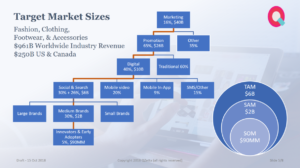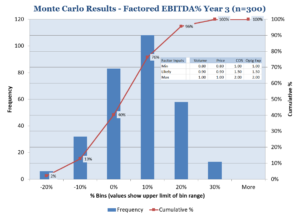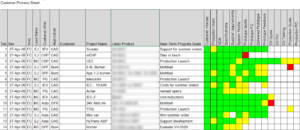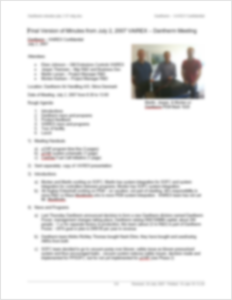From market segmentation to Monte Carlo estimates of financial profitability to check lists for commercial contracts, we have developed and use a large library of tools for customers’ needs. Here are a few examples.
Business planning: the following is an example of the use of segment trees to estimate a SaaS company’s total market size at launch (TAMAL).

Financial planning: the following is the histogram from a Monte Carlo simulation of a company’s projected EBITDA in its 3rd year of sales.

Business development and sales: the following is a screen shot from a project and customer management sheet. Associated with this sheet are customer profiles, customer priority matrices, MNDAa, development and production contracts, and product specifications documents.

Product development: the following is an example of a system profile used to document product needs, as synthesized from customer, market, and competitive inputs, and the team’s development commitments. Key to this tool is the use of minimum, target, and delight performance measure for each customer need – taken together, one can quickly determine the market value of a proposed or existing product.

Coming full circle, from customer discovery to production contract: here is a copy of page one of a set of customer-meeting notes; these summaries are often four to twelve pages long and, by release, often include improvements and corrections from the teams; the process and discipline of writing and sharing these notes is a great way to document our agreements, keep projects on track, and build trust across the teams and companies.
(The consistent use of this tool contributed to Eben and his team receiving a letter of commendation and thanks from the CEO of a major Japanese automotive OEM. Separately, it was also cited as a major element contributing to a successful Series A capital raise in a technology startup.)

(all images used by permission)
